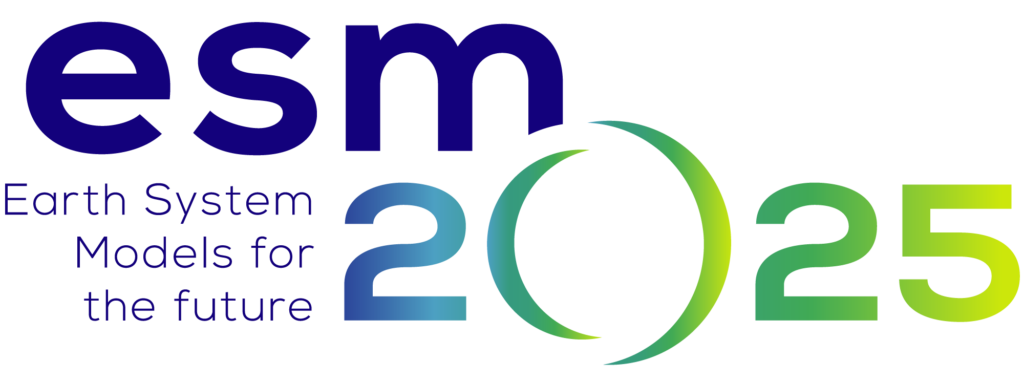Co-sponsored by WCRP and ESM2025 on January 22-24, 2024 in Bristol (UK)
Organising committee: Chris Jones, Pierre Friedlingstein, Tatiana Ilyina and Roland Séférian
Background: When will global warming stop?
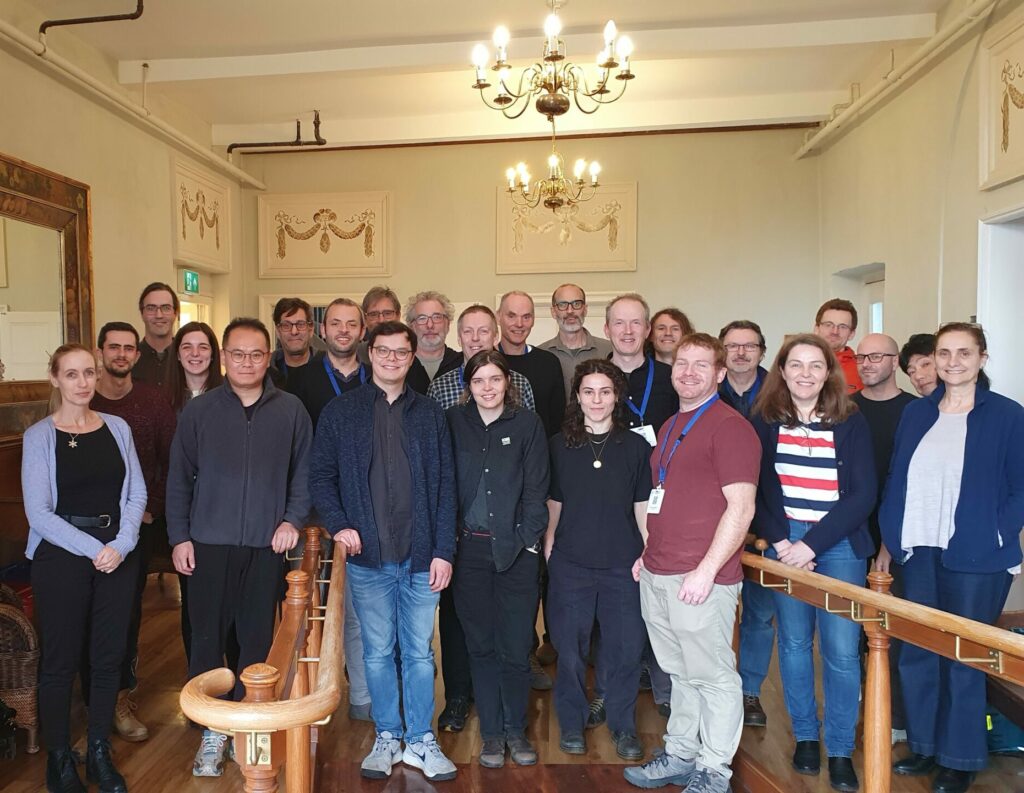
Aims
This workshop goal was to assemble current knowledge on TCRE and ZEC in the context of carbon budgets and create a plan to move forward towards an assessment over the next 1-2 years. Approximately 30 people attended in person with a further 20 online. A major success of the workshop was bringing together experts and expertise from different disciplines spanning climate feedbacks and carbon cycle. Although climate sensitivity has been assessed recently in Sherwood and Webb and AR6, it is central to TCRE and so advances in physical feedbacks are within remit of this work. The focus though is likely to be on carbon cycle and airborne-fraction aspects of TCRE which to date have not been systematically assessed in this way.
Sessions and outcomes
The 2.5 day workshop consisted of 5 sessions. The first session was to understand how to assess the system in terms of different sensitivities of different aspects, where the uncertainties lie, how to combine aspects again if we can constrain individual terms. We discussed techniques to decompose the system into component sensitivities to do with radiative, therma and carbon cycle responses and their changing balance between CMIP5 and CMIP6. The RAZE framework was widely received as being an attractive way forward to understand the system.
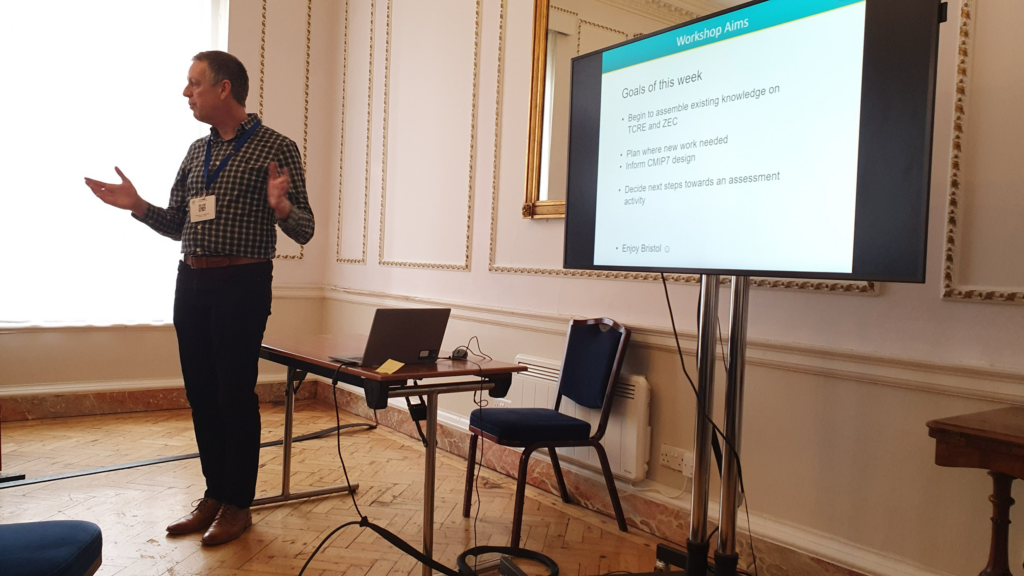
The second session took a deep-dive into the processes which drive TCRE and ZEC and how can we better use our knowledge of them. It drew on a wealth of expertise from ESM2025 scientists, including the recently published expert assessment of process uncertainty underpinning ZEC. The session also saw a great overview (of the work of 30 people over 5 years boiled down to 10 minutes) by Mark Webb on the ECS assessment and the process they went through to arrive at a quantitative conclusion.
Next we explored possible constraints on TCRE and ZEC. Emergent constraints form one avenue, and multiple studies exist providing some sort of constraint either on the whole system or individual components. Presentations showed new work constraining the direct link from emissions to observed warming, although this also includes the effect of non-CO2 forcing (and hence is “effective TCRE”), and work looking at constraints on carbon cycle response to CO2, inter-annual climate variations and spatial patterns of soil carbon. No work yet exists on constraining ZEC in this way, and this remains a gap in our knowledge.
Then we talked about the role of simplified models to constrain processes and combine multiple lines of evidence. We heard about Bayesian and other history matching techniques to constrain model parameters or weight outputs from large ensembles. A process-based assessment of simple modes is required beyond observed data to bring in all we can know from ESMs and the relationships between quantities such as heat and carbon.
The aim of the final session was to decide how we can combine ZEC/TCRE assessments meaningfully towards improved carbon budget information, or guidance on system behaviour during reducing, net-zero and net-negative emissions. It had become clear by this stage that the question itself is very complex with many nuances requiring attention!
The concept of ZEC as a response after zero emissions is likely too simplistic, and ZEC should be viewed more as a divergence of system behaviour from the simple relationship of warming-to-emissions given by TCRE. The session also discussed future directions for non-CO2 forcing in this context. How does a multi-gas ZEC behave and how would we measure it. Treatment of some non-CO2 gases is easy to define, but aerosols, and more especially land-use are very hard to reach clear agreement on experimental design.
We finished with a discussion on requirements for experimental design as we head (very rapidly) towards CMIP7. There is a push towards simulations being emissions driven and this brings requirements to better understand the Earth System response to emissions. This workshop complements ongoing discussion around experimental design such as flat-10 or AREA experiments.
Energy, engagement and inclusivity
The energy in the room was clearly very high – all talks were excellent and despite speakers mainly keeping to time, there was so much interest and lively questions and discussions that inevitably we overran.
We made every effort to make sure remote participants were fully included. The use of an “Owl” speaker and microphone helped a lot, and several people online commented that the meeting had worked remarkably well. We are extremely grateful to all our remote participants who took the effort to join despite being across sometimes very unfriendly time-zone differences!

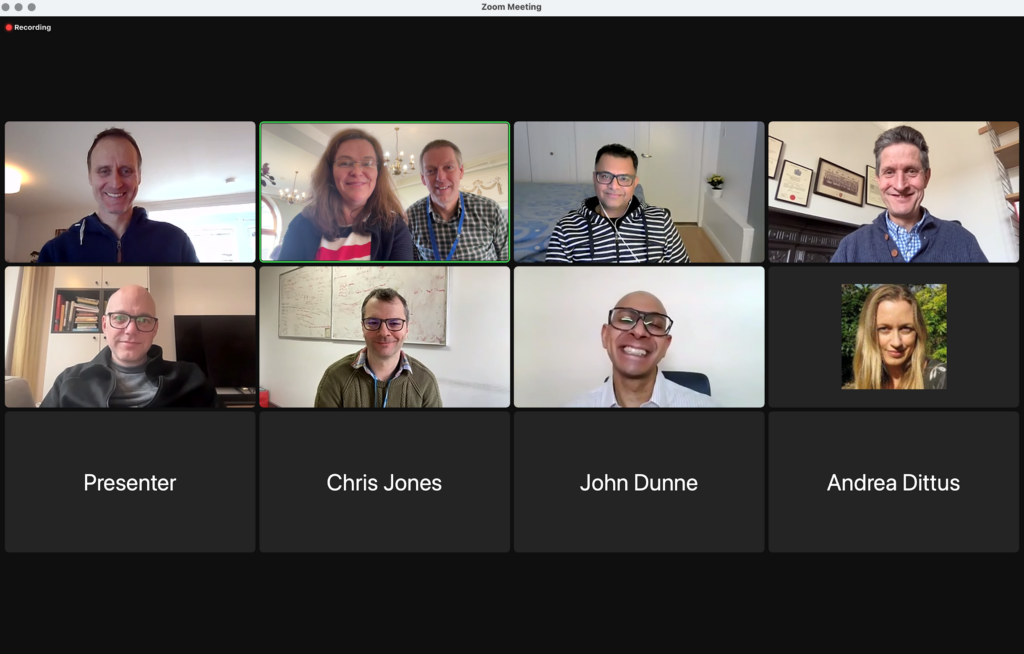
For those in person, the venue was a lovely example of a historical building, and we are very grateful to the Bristol University Evenets team and all at Clifton Hill House for every smooth logistics and catering. A workshop dinner on day 2 allowed us some down time and informal chat.
Next steps
Specific next steps include regular meetings of the convenors of the workshop to push forward plans for an assessment process. This will include drafting a technical note to clearly define terms (it was clear even simple concepts such as TCRE and especially ZEC can be used differently). A summary of experimental design and CMIP7 requirements will be written up and made available to CMIP-IPO for use in their finalising of FastTrack plans.
IPCC timelines for AR7 are emerging. The 60th session of the IPCC had just completed as we were at the workshop and announced AR7 cycle to conclude with a synthesis report in 2029, with WG1 expected to be completed in 2028. No detail yet on either CMIP timelines nor publication cutoffs, but an assessment would need mature results during at least 2027, ideally 2026, with full publication during 2027. This brings us a challenge, but one to which we intend to rise.
